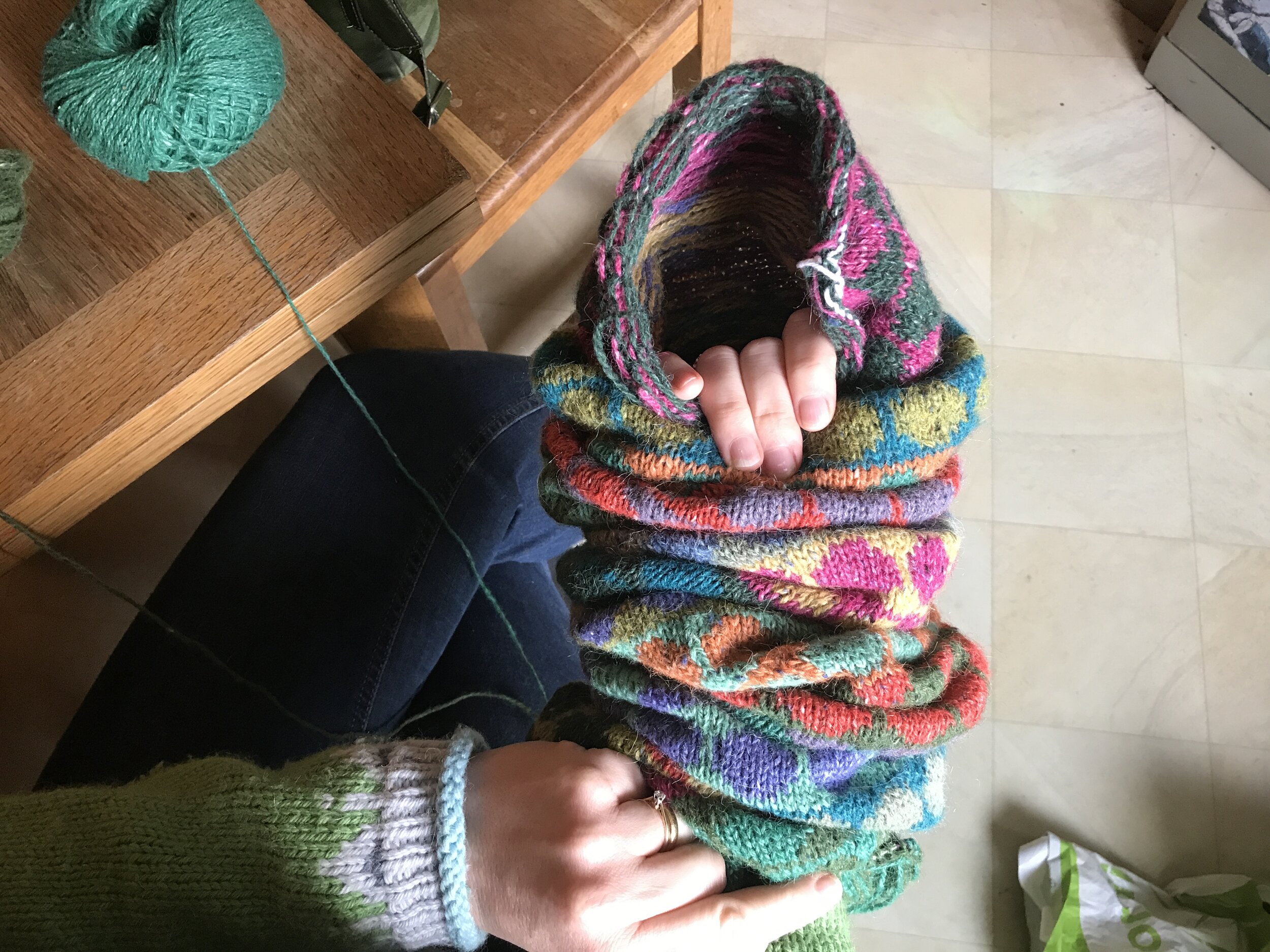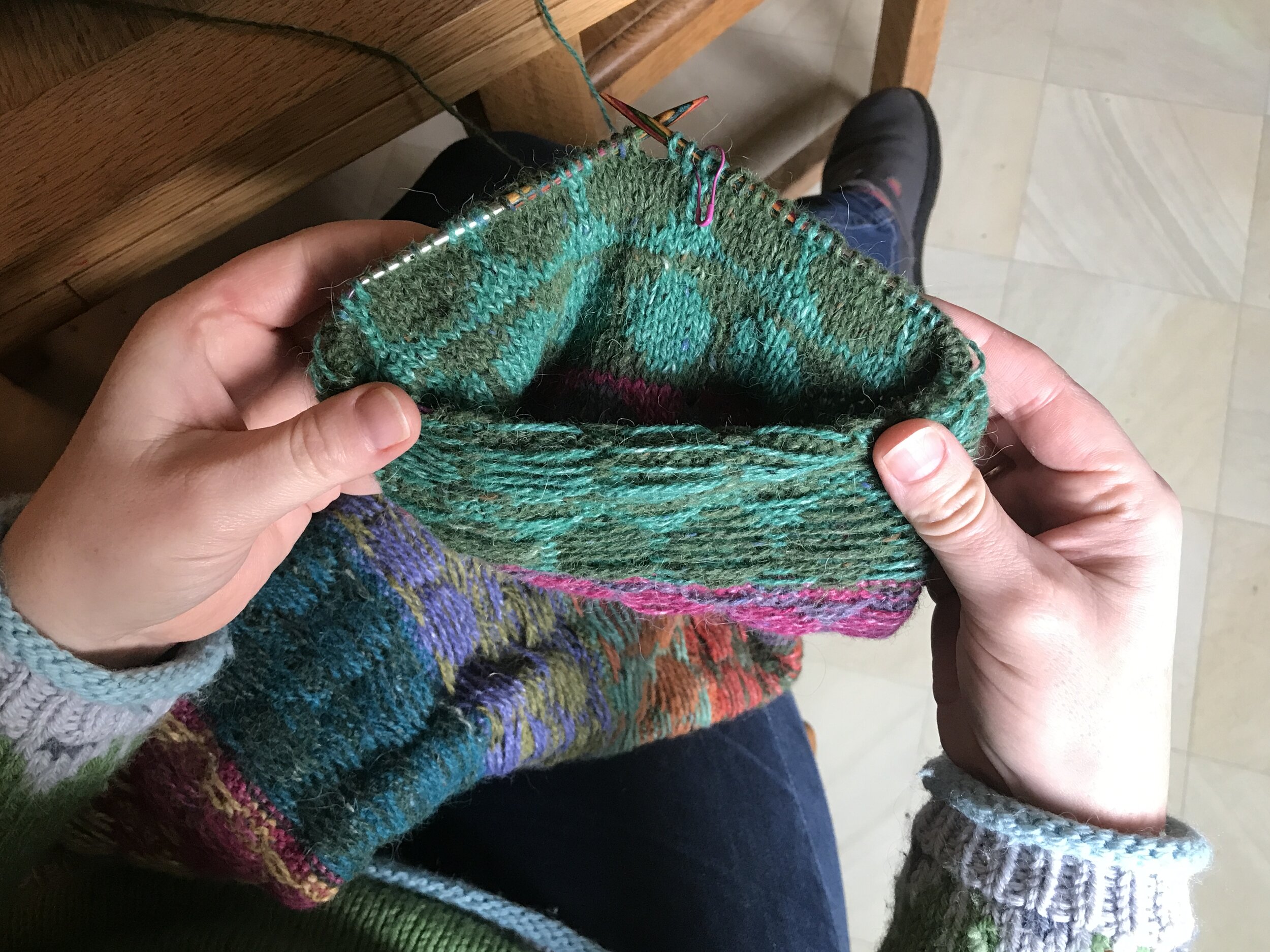Do you struggle to keep your tension even when you knit stranded colourwork in the round over small circumferences? Lots of people do!
I’ve mentioned the trick of working inside out a few times in our books and here on the blog, but I’ve never shown in detail what I mean by this, so in today’s “not totally gratuitous excuse for more photos of my nearly-finished cowl”, I’m going to take you through it. The pattern I’m working on is the Striped Scarves and Cowls by Kaffe Fassett from the Mason-Dixon Knitting Field Guide No. 13 Master Class.
What’s the problem?
When you knit stranded colourwork (sometimes known as Fair Isle or fairisle), you strand the yarn not in use at the rear of the work. It looks like this on the wrong side:
When you work on a large circumference such as the body of a sweater, things are generally fine, but when you go to a smaller circumference such as a sleeve, mitten or sock, problems can arise… The smaller the circumference, the more the tendency for the floats to “cut the corners”.
In the image above, the green circle represents the outside of the knitted fabric in a small circumference, and the blue is how the floats tend to “cut across the corners”. Once this piece of knitting is flat, the floats will pull the stitches between them together, and cause the fabric to pucker.
How do I fix it?
Turn your work inside out!
Here is how I would normally work on a project. The right side of the work is outermost, and as I knit my way around, the rest of the round is behind my needles.
To work inside out you literally need to pull your work through itself so that it is inside out (as if you were sorting out the washing!).
Once your wrong side is outermost, you need to arrange it like this:
As you knit your stranded colourwork, you are still looking at the right side of the fabric where your needle tips are, but you have the rest of the round sitting between your body and the needles (instead of behind the needles as it was before). There’s no need to purl, you just knit as normal, but the wrong side is outermost.
Now the floats are forced around the outside of your work. In the diagram above, the green is the knitted fabric and the blue floats are now on the outside of the work, so they have to take the longer path and can’t “cut corners”.
If I turn my work back the right way out, you can see that the floats aren’t too tight and when I block my cowl, the fabric should be nice and flat!
I’ve finished all of the knitting on my cowl now. I just need to graft the ends together, so hopefully I’ll be back next week with some finished photos!
In case you missed it, I wrote a post last week about avoiding the jog in this circles motif.
And if you too would like to have some fun playing with colour, you will find copies of the endlessly inspiring Mason-Dixon Field Guide no. 13 Master Class over in our online shop. Happy knitting!








